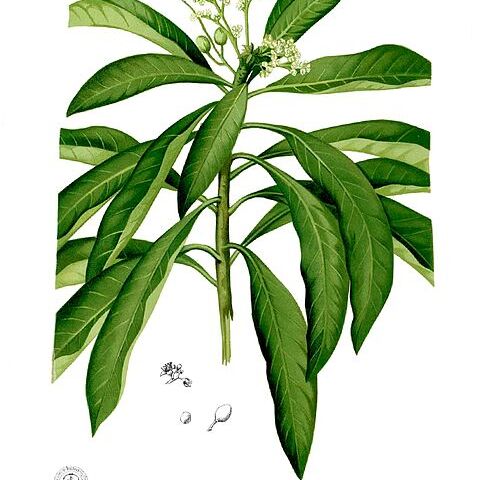A small tree. It grows 4-10 m high. The young branches are softly hairy. It loses its leaves during the year. The leaves are thick and leathery. They vary in shape but are oblong and taper to the base. The blade is 5-25 cm long by 1.5-10 cm wide. They are a dull grey-green and have a prominent raised midrib. The flowers are small and cream. They are about 05. cm across. They occur in a group at the end of branches. The fruit is a smooth fleshy lens-shaped fruit with a stone inside. They are about 1-1.7 cm long by 1-1.5 cm wide. There is a single hard shelled seed. The fruit are edible.


